Improving the acquisition of commercial truck accident claims can absolutely transform a personal injury practice, but only if your marketing is engineered for the realities of commercial transportation claims. Consumers behave differently when an 18-wheeler is involved, defense teams play by a different playbook, and the value of a signed case justifies a higher level of resource investment at every stage of the process.
Simply put, if you want more high-value trucking accident victims claims in your pipeline, you need a strategy that attracts the right people, wins their trust, and moves them from first click to signed clients with as little friction as possible.
Curious to learn how you can implement effective marketing for commercial trucking injury lawyers? Keep reading, and we’ll unpack a strategy-heavy approach, designed for personal injury attorneys that want growth without wasting budget!
Why Trucking Cases Behave Differently (and How That Shapes Your Marketing)
In the personal injury law context, trucking accidents tend to produce more severe injuries on average, which means higher medical costs, longer recovery, and larger non-economic damages. That alone raises stakes for everyone. Layer on the regulatory ecosystem that surrounds commercial carriers, and you get a class of cases that’s more complex and more valuable than routine passenger car claims. Your marketing should speak to that reality.
There’s also the deep pockets dynamic. In many matters, truck accident attorneys can pursue not only the driver, but also the trucking company itself pursuant to vicarious liability (and sometimes through independent negligence claims like negligent hiring, retention, supervision, training, or failure to maintain equipment properly). Shippers, brokers, maintenance contractors, and manufacturers may also share responsibility depending on the facts of the case.
When your website and ads explain, in simple terms, that the law allows recovery against employers and other companies when their policies, decisions, or lack of oversight contribute to a crash, potential clients hear something different from the generic “we handle truck accidents” message. They hear that you’re looking deeper into what a case could entail. They hear that you build a complete claim rather than chasing the smallest target.
Besides, complex liability opens the door to richer discovery for the strategically-minded commercial truck accident attorney. Hours of service records, electronic logging devices, telematics, dispatch notes, bills of lading, pre-trip and post-trip inspection logs, and maintenance records can all become sources of proof. When your personal injury marketing references these specifics, you signal expertise. When your intake collects facts that map to these categories, you signal that you are ready to protect evidence fast.
Define the Market You Want, Not Just the Market You Have
A strategy built for trucking litigation starts with clarity about who you want to serve as a personal injury law practice. Think beyond a generic “injured motorist” label. Consider the corridors where heavy truck traffic is dense, the industries that move freight through your region, and the language communities you can serve well. Decide which injuries and fact patterns your firm is best positioned to handle, from underride impacts and jackknife collisions to cargo shift incidents and fatigued driving. When you decide this up front, every other decision becomes easier, from keyword selection to which videos you film first.
Create short, plain summaries of your ideal clients. For example, consider the night shift warehouse worker hit by a box truck while commuting, the out-of-state family rear-ended by a tractor-trailer on a Texas interstate, and the motorcyclist sideswiped by a delivery truck driver in a dense urban core. Write down what they are afraid of, what they search for, and the barriers that keep them from calling. Use that to guide language across your ads and pages.
Brand Positioning That Signals Real Authority
Trucking clients choose firms that feel decisive, organized, and experienced. Your brand should support that choice. Keep visuals clean, avoid gimmicks, and make it effortless for visitors to see what you do, where you do it, and why you’re credible. Replace generic slogans with proof points. If your team has secured strong results in commercial vehicle matters, present them with context, not chest beating. If your team speaks Spanish, say so in the site header and give visitors a one-click path to Spanish pages and bilingual intake. If you try cases and cover the state statewide, don’t bury that. Authority is a function of clarity.
Bring your lawyers forward in a video to explain the legal process surrounding truck accident cases. A short, minute-long explanation of how black box data protects an injured client says more than ten paragraphs of abstract text. Short clips that show a lawyer walking an audience through a truck inspection checklist (or explaining why early accident investigation efforts matter to personal injury cases) give the viewer confidence that your team knows the road ahead. And reiterating that you offer a free consultation, contingency fee arrangements, and other services that reduce the barrier-to-entry can be critical for securing prospective clients.
Messaging That Meets People Where They Are
The person searching after a collision wants two things. They want to know whether a case is worth pursuing, and they want to know whether you’ll take care of the process so they can focus on recovery. Keep your copy direct and human. A sentence like, “We secure and review the truck’s electronic data, interview witnesses, and push the insurer for a fair outcome,” is clearer than a string of legal buzzwords. Avoid scare tactics. Earn trust with specifics and calm guidance.
Address the fears people rarely say out loud. Many worry that suing a trucking company means a long public fight they can’t afford. Explain that most matters resolve privately, that contingency fees align incentives, and that you’ll walk them through costs and timelines before they sign anything. If your firm offers bilingual support from intake through settlement, say it early and repeat it.
Website Fundamentals Matter When Clients Are Under Stress
Most trucking leads arrive by phone. Your site has to load fast, fit small screens, and make calling or texting obvious without hunting for a button. Aim for a simple header with click to call, a short form that works on mobile, and content that tells people exactly how you help. Keep paragraphs short, subhead often, and use plain words. A visitor should understand your offer within five seconds: what you do, where you do it, and how to start.
Landing pages deserve the same care you bring to a demand letter. Each page should tackle one intent. A page for “18-wheeler accident lawyer” needs focused copy about commercial vehicles, not a generic crash treatment. Use headlines that echo search intent, include a short checklist of next steps after a crash, and feature two or three brief testimonials that sound like real people. Place proof elements near calls to action so the reader sees social trust at the moment they decide to reach out.
SEO Built for Topics, Not Just Keywords
Winning organic search in trucking takes topical authority. Build a hub that clusters around commercial vehicle issues, then publish clear, useful articles that answer real questions. Think in themes: causes of truck crashes, who may be liable, how federal rules affect a claim, what evidence disappears if you wait, how damages are calculated, and what to do when an insurer blames the victim. Connect articles with internal links so a reader and a search engine can follow the logic easily.
Local visibility still matters. Optimize your Google Business Profile with trucking as a distinct service, upload short videos, pick the right categories, and post updates when you publish useful content. Keep your name, address, and phone number consistent across directories. Ask happy clients to write honest reviews that mention trucks or commercial vehicles when appropriate. Small signals compound over time.
Technical basics support all of it. Use fast hosting, compress images, avoid cluttered code, and make sure your site passes core web vitals. Add schema markup for legal services and for FAQs where you’ve written Q and A content. Make your Spanish pages indexable and internally linked, rather than hiding them behind a language switcher that search engines can’t see.
Content That Educates and Persuades
Content should lower anxiety and raise confidence so that the prospective client feels empowered to pursue their claims. Write guides that walk through what happens in the first 72 hours after a truck crash. Film a short video that explains electronic logging devices in plain language. Build a web calculator that helps families estimate lost wages with simple inputs. Create a timeline graphic that shows how a case progresses from intake to resolution. None of this has to be fancy. It just has to answer the questions people actually ask.
Editorial discipline helps you scale. Map a quarterly calendar with topics that match the seasons and local realities. If winter brings more jackknife incidents on your highways, publish content in late fall that addresses winter truck risks. If a new state appellate decision affects negligent hiring claims, write a quick summary for lay readers and a deeper analysis for referral partners.
Paid Search That Hunts for Intent, Not Clicks
Trucking clicks are expensive, so every part of a paid search campaign must filter for intent. Start with exact match groups for medium tail and long tail keywords like “18-wheeler accident lawyer” and “commercial truck injury attorney”. Pair ads with landing pages that mirror the phrasing and answer the implied question in the keyword. Use call-only extensions during peak hours. Negative match anything that suggests job searches, trucking schools, or defense side interests.
Bid strategies should reflect real case value. If your signed case rate from paid search is five percent and your average fee on trucking matters is substantial, you can afford to bid more than you might in auto. Track all the way to signed retainer, not just to form fills, and shift budget toward the campaigns that generate retained files, not vanity metrics. Rotate creative often. Show different headlines that test value propositions like early evidence preservation, bilingual support, or statewide coverage. On social platforms, use video to demonstrate empathy and skill. A calm thirty-second clip that explains what to do at the scene, or how to avoid saying the wrong thing to an insurer, will outperform a stock image with generic text. Keep captions readable without sound. Invite viewers to text questions.
Retargeting (Nudge Without Nagging)
Most visitors will not call on the first visit. Retarget them with useful reminders rather than aggressive sales. Offer a simple download, like a post-crash checklist. Share a short client story where timing made a difference, such as preserving dashcam footage before it was overwritten. Limit frequency so you stay present without becoming noise.
Lead Generation Services as a Force Multiplier
Not every firm wants to build every channel in-house. High-quality lead generation partners can supply steady volume while your organic and paid programs mature. The key is to choose partners who care about consent, pre-screening leads, and fairness. Look for networks that explain how they source inquiries, document affirmative opt-in, and distribute leads through neutral rotation rather than favoritism.
Walker Advertising is an example of a provider that aligns with those principles. Through our consumer sub-brands like Los Defensores and 1 800-THE-LAW2, we reach injured people in both English and Spanish, pre-screen the claims (with clear disclosures), obtain consent (and ensure legal compliance at every stage), and route inquiries to firms that handle the relevant practice and geography.
For trucking matters, that means you receive contacts from people who already understand they need help after a commercial vehicle crash, and who have given permission to be contacted. Because Walker’s rotation is neutral, firms of different sizes can participate without concern that selection is biased. Using a lead partner like this is not about outsourcing strategy. It’s about smoothing volume while you build durable channels of your own.
Use lead partners as one leg of the stool. Keep control by tracking outcomes inside your CRM, tagging each source, and comparing signed case rates and average fees by channel. That transparency lets you adjust budgets confidently and prevents overreliance on any single source.
Speedy and Trust-oriented Intake
Speed to lead decides who gets hired. Aim to contact every new inquiry within five minutes. Equip your team with texting so they can reply even when the caller can’t talk. Offer video consults on the same day. Use simple scheduling links that work on a phone. Put responsibility for rapid response on named people and measure it. When a family sees that you move fast, they assume you will move fast for their case, too.
Build scripts that sound like natural conversation. Start with care, gather facts that map to trucking proof, and close with a clear next step. Train staff to avoid legal advice while still giving practical guidance, such as how to preserve photos, how to request a copy of the police report, and why medical follow-up matters. Record and review calls for coaching.
Pre-Screen Without Friction
You want to spend attorney time on the right matters. Teach intake to spot signals of value without making callers feel grilled. Listen for commercial plates, DOT numbers, company logos, hazardous cargo, multi-vehicle scenes, or mentions of fatigue and long hours. Ask gently about medical treatment and work status. Confirm location and date to check statute issues. If the facts point away from a trucking claim, treat the person with respect and refer out when you can. A kind no can still earn a positive review and a future referral.
Create a simple scoring model inside your CRM so high-potential matters get same-hour attorney review. Scores can blend factors like severity, liability clarity, number of potential defendants, and insurance indicators. Keep it simple so staff can use it. Review outcomes monthly and refine.
Be Willing to Nurture Leads Over Time
Some families need time. Build a short nurture sequence that sends two or three plain emails and a text over the first week. Keep each message helpful. Offer a checklist, answer a common question, and invite a reply. Avoid pressure. The goal is to stay present, prove usefulness, and make it easy to say yes when they are ready. If you have Spanish-speaking prospects, write separate copy that respects tone and cultural context rather than translating word-for-word.
Reputation and Social Proof
Reviews move the needle in high-stress practice areas. Ask for feedback at predictable moments, such as after a consultation that went well or at the close of a matter. Make it simple with a direct link to your profile. Respond to reviews with gratitude. If someone leaves a critical comment, reply with care and without case specifics. On your site, use short client quotes alongside photos where you have permission. Avoid exaggerated claims. The most persuasive stories are specific and calm.
Media and community presence help too. Sponsor a local truck safety event. Speak at a town hall about sharing the road with large vehicles. Publish a short explainer in a community newspaper about what to do after a crash. These touches build brand memory long before someone needs you.
Data, Targets, and Iteration
Treat growth like a portfolio. Define the numbers that matter, build a simple dashboard, and review it weekly. Useful numbers include cost per qualified inquiry, time to first contact, consult scheduled rate, signed case rate, and average fee by channel. Track separately for English and Spanish campaigns so you can allocate budget with precision. Pay attention to the lag between spend and signed files. Trucking matters often take longer to close. Plan cash flow accordingly.
Run controlled tests. Change one variable at a time and wait long enough to reach statistical confidence. Test the promise in your headline. Test same-day video consults against next-day phone calls. Test short forms against slightly longer forms that pre-qualify better. Document every test, the hypothesis, and the result so your learning compounds.
Forecast before you scale. If you intend to add spend in a new corridor, model what has to be true for that spend to pay for itself. Build several different scenarios, from conservative to aggressive. Look at capacity, because extra leads hurt morale if lawyers cannot respond quickly. Growth feels best when the team sees that the firm keeps its promises to clients and to staff.
Compliance and Consumer Respect
Good marketing respects both legal marketing rules and the people you’re targeting with your marketing. Follow your state’s advertising rules. Be clear that past results don’t guarantee future outcomes. Do not present testimonials in a way that confuses readers. If you text or call, get proper consent and store it. If you work with partners, vet their consent practices and their rotation systems. Keep private information private. When your materials match your ethics, clients notice.
For bilingual outreach, make sure Spanish copy is written by people who understand regional usage. Avoid machine translations that read awkwardly. Provide Spanish-speaking staff at intake and during the life of the case. Trust grows when people can tell their story in their first language and hear your guidance without strain.
Team, Tools, and Process
Marketing scale depends on people and systems. Designate an owner for each channel. Hold a short weekly standup where intake, marketing, and the lead trial lawyer review numbers, discuss what callers are asking, and decide one improvement for the next week. Give your team clear playbooks, from how to launch a new landing page to how to tag a lead source. Pick a CRM that fits your size, and actually use it. Fewer tools well used beat a stack that no one opens.
Train continuously. Record short internal videos where a lawyer explains a new issue in trucking law, then teach intake how to listen for it. Invite staff to role-play tough calls. Reward curiosity when a team member suggests a better follow-up message or a clearer form field.
Budgets and the Business Case
Because trucking cases deliver higher fees, you can afford a higher acquisition cost. The trick is to know your numbers and spend with intent. Start with an annual target for signed trucking files, then work backwards to estimate required inquiries and the spend needed to generate them. Assign budgets by channel and by language. Review monthly and shift money toward what proves itself. Keep a reserve so you can take advantage of an opportunity fast, such as a new placement on a corridor billboard or a seasonal video series before winter weather hits.
Think long term. Organic content and local authority take months to mature, so fund them steadily. Paid search turns on faster, so keep a core campaign always on and layer tests on top. Lead partners can smooth volatility. The blend gives you resilience when one channel slows.
A Few Scenarios to Consider as You Explore Marketing for Commercial Trucking Injury Lawyers
Imagine a family rear-ended by a semi on a rural interstate. They search for help that night on a phone with a weak signal. Your fast site loads, the headline mirrors their search, and the page explains that you secure black box data and pursue claims against the employer when the facts allow it. They tap to text, your team replies in two minutes, schedules a video consult for the morning, and sends a short checklist. In the consultation, the lawyer explains how evidence is preserved and why early action matters. The family hears a plan and signs on with the law firm electronically. The marketing, intake, and legal work all supported one another.
Now consider a Spanish-speaking cargo van driver struck by a tractor-trailer while delivering parcels in a dense city. His spouse searches in Spanish. Your Spanish page appears with a clear path to bilingual legal support. The copy reassures them about employment status and retaliation fears. They call at 9 pm. Your bilingual intake answers, listens, and schedules a same evening video call with a Spanish-speaking lawyer. The family feels heard and supported. They sign on to your firm with confidence.
A third scenario involves referrals. A small firm that handles minor auto accidents recognizes that a crash involves a commercial vehicle. Because you shared a short guide with referral partners about how to spot trucking facts, they call you early. You accept the case on a fair split, handle the heavy lifting, and protect the partner relationship. Marketing made that phone ring, but relationships turned it into a file.
Putting It All Together
Week by week execution beats grand plans that never ship. Write a one-page roadmap that covers the next quarter. Commit to publishing two trucking-specific resources each month. Keep your paid search always on with a modest floor and set aside budget for a monthly test. Hold intake coaching every Friday. Ask for reviews every time you close a matter. Meet with your lead partner once a month to compare signed case data and tweak the qualification. None of this is dramatic. But discipline builds momentum.
If you stick with it, your firm will be the one injured families find first, trust fastest, and choose with confidence. That is what effective marketing for commercial trucking injury lawyers can do.
Operational Readiness for Case Surges
Marketing works best when your operations can absorb sudden volume. Build overflow plans before you need them. Cross-train staff so intake, paralegals, and attorneys can cover one another when a campaign wins big or a major wreck makes headlines. Keep a short list of trusted court runners, translators, and medical record vendors who can step in fast. Document how to send preservation letters the same day, how to request electronic logging data, and how to coordinate inspections with experts. When the phones spike, a checklist beats improvisation. Clients sense order, and that confidence turns a fragile first call into a signed retainer.
Contact Walker Advertising for Help Growing Your Firm’s Client Base
Whether you’re a solo lawyer, or a small firm lawyer — or are part of a larger firm with plans for further expansion — it’s important to grow your client base in order to hit your revenue and client growth goals. Here at Walker Advertising, we can help. We operate a number of popular attorney networks (including our Los Defensores and 1-800-THE-LAW2 brands) through which firms are able to access leads for various legal claims.
The leads we acquire through our various online marketing efforts — from social media marketing to targeted web ads — have been pre-qualified by our team so that you aren’t hassled by a flood of leads that are simply not relevant or actionable for your purposes. By accessing these quality leads, you’ll be well-equipped to select the best ones to grow your firm business.
Best of all, you won’t have to spend your valuable time and effort on building out your online marketing efforts. Don’t worry about SEO optimization, trend analysis, or any other complex marketing issues. Instead, use us to access pre-qualified inbound leads, and focus your limited internal resources on providing quality representation to your existing (and new) client base.
Contact Walker Advertising today to connect to a member of our team who can explain how our legal networks can help your firm business thrive in this ever-changing digital marketing landscape.
We look forward to assisting you.






